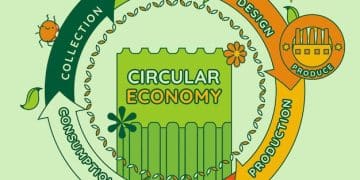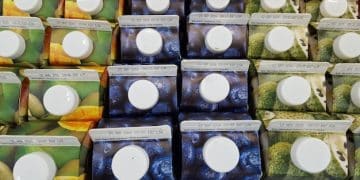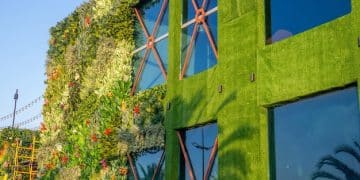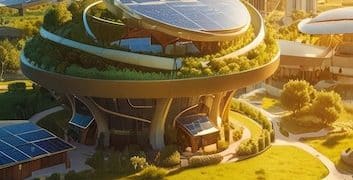Latest Innovations in Sustainable Packaging in the US

The latest innovations in sustainable packaging in the US are rapidly evolving, focusing on biodegradable materials, recycled content, and refillable systems to mitigate environmental impact while addressing consumer demand for eco-friendly solutions.
The packaging industry is at a pivotal moment, responding to global calls for environmental responsibility. As consumers and regulations push for greener solutions, the question, What are the Latest Innovations in Sustainable Packaging in the US? becomes increasingly relevant. This deep dive explores the cutting-edge developments transforming how goods are packaged across America, balancing environmental stewardship with practical business needs.
The Imperative for Sustainable Packaging Innovation
The demand for sustainable packaging is no longer a niche concern but a mainstream imperative. Traditional packaging often relies on fossil fuels, contributes to landfill waste, and presents significant challenges in terms of recycling infrastructure. This landscape has spurred a rapid acceleration in research and development, particularly within the US, aiming to redefine what’s possible in packaging. The drive for innovation is multifaceted, encompassing material science, design principles, and circular economy models. It’s about moving beyond simply “less” packaging to “better” packaging that actively supports environmental health.
This transformation is fueled by a confluence of factors: heightened consumer awareness, corporate sustainability goals, and evolving regulatory pressures. Many companies are recognizing that embracing sustainable packaging isn’t just about compliance; it’s a strategic differentiator, fostering brand loyalty and demonstrating corporate citizenship. The economic viability of these new solutions is also a key consideration, as innovations must be scalable and cost-effective to achieve widespread adoption.
Drivers of Change in the Packaging Landscape
Several key drivers are propelling the advancements in sustainable packaging. These forces create a dynamic environment where continuous innovation is not just encouraged but essential. The market is responding to clear signals that the status quo is unsustainable.
* Consumer Demand: A growing segment of consumers actively seeks out products with environmentally friendly packaging, willing to pay a premium for greener alternatives. This shift in purchasing behavior acts as a powerful incentive for brands.
* Corporate Commitments: Major corporations are setting ambitious sustainability targets, pledging to reduce their carbon footprint, increase recycled content, and improve packaging recyclability or compostability. These commitments often involve significant investments in new packaging technologies.
* Regulatory Landscape: Governments, at both federal and state levels, are implementing policies such as extended producer responsibility (EPR) schemes and single-use plastic bans, which mandate and incentivize more sustainable packaging practices.
* Technological Advancements: Breakthroughs in material science, biotechnology, and manufacturing processes are enabling the creation of novel packaging solutions that were previously not feasible or economically viable.
The journey towards fully sustainable packaging is complex, requiring collaboration across the entire supply chain—from raw material suppliers to manufacturers, retailers, and consumers. Each step in this ecosystem plays a crucial role in the successful implementation and adoption of innovative solutions. Public-private partnerships are also emerging as vital mechanisms to fund research, develop infrastructure, and overcome systemic barriers.
Breakthroughs in Material Science for Eco-Friendly Solutions
The core of sustainable packaging innovation lies in the materials themselves. For decades, plastics, glass, and metals dominated, each with its own environmental footprint. Now, scientists and engineers are pushing the boundaries, developing materials that are either bio-based, more easily recyclable, or completely compostable at scale. These new materials aim to address the persistent problem of waste and reliance on finite resources. The focus is on creating closed-loop systems where materials can be endlessly reused or safely return to nature.
One significant area of progress is in the development of bioplastics. Unlike traditional plastics derived from petroleum, bioplastics are sourced from renewable biomass, such as corn starch, sugarcane, or cellulose. While not all bioplastics are biodegradable or compostable, advances are increasingly leading to materials that can break down safely in industrial composting facilities, or even in home compost environments. This diversifies end-of-life options beyond recycling, particularly for contaminated packaging that would otherwise be landfilled.
Pioneering Sustainable Materials
The US is seeing a surge in advanced materials designed for environmental benefit. These innovations are not just theoretical; many are already making their way into consumer products, signaling a tangible shift in the industry. The impact of these materials extends beyond their raw composition, influencing manufacturing efficiency and distribution logistics.
* Compostable and Biodegradable Polymers: New formulations of Polylactic Acid (PLA), Polyhydroxyalkanoates (PHAs), and other plant-based polymers are becoming more robust, offering performance comparable to conventional plastics while being able to degrade in specific environments.
* Mycelium-Based Packaging: Utilizing the root structure of mushrooms, mycelium can be grown into custom shapes, creating lightweight, shock-absorbent packaging that is fully compostable. This offers a natural alternative to polystyrene foam.
* Seaweed and Algae-Based Films: Researchers are developing flexible films from seaweed and algae that are edible or naturally biodegrade, posing no threat to marine life if they enter waterways. These are particularly promising for single-serve sachets and food wraps.
* Upcycled Waste Materials: Innovations include turning agricultural waste, fruit peels, or even industrial byproducts into functional packaging materials, thereby reducing waste streams and creating value from what was once discarded.
Furthermore, advancements in paper and fiber-based packaging are equally impressive. While paper has long been seen as a more sustainable option, new coatings and structural designs are making it water-resistant, grease-proof, and suitable for a wider range of products, without compromising recyclability. This includes molded fiber solutions that can replace plastic trays and inserts. The material innovations are not just about finding alternatives but about creating materials that fit seamlessly into a circular economy, minimizing resource extraction and maximizing resource utilization.

The Rise of Recycled Content and Circular Economy Models
Beyond new materials, a significant innovation thrust in US sustainable packaging revolves around maximizing the use of recycled content and embedding circular economy principles. This approach focuses on keeping materials in use for as long as possible, reducing the need for virgin resources and lessening waste generation. The circular economy model challenges the traditional linear “take-make-dispose” approach, moving towards a regenerative system. This transition requires not only technological advancements but also systemic changes in collection, sorting, and reprocessing infrastructure.
Historically, challenges with collecting and sorting post-consumer waste have limited the widespread adoption of recycled content in packaging. However, recent innovations in recycling technologies, coupled with increased investment in infrastructure, are beginning to bridge this gap. Advanced mechanical recycling processes can now produce higher quality recycled resins, while chemical recycling offers the ability to break down plastics to their molecular level, creating materials virtually identical to virgin plastics. These advancements are critical for expanding the pool of available recycled content for packaging applications.
Innovations in Recycling and Reuse
The shift towards a circular economy for packaging in the US is marked by several key innovations that facilitate higher rates of recycling and promote reuse models. These initiatives are transforming how packaging is designed, consumed, and ultimately managed at its end-of-life.
* Advanced Recycling Technologies: Chemical recycling, or advanced recycling, is gaining traction. Technologies like pyrolysis and depolymerization can break down mixed plastic waste into its basic building blocks, which are then used to produce new, high-quality plastics. This significantly expands the range of plastics that can be recycled.
* Deposit-Return Systems (DRS) and Collection Infrastructure: States are increasingly exploring and implementing DRS for beverage containers, which have proven highly effective in increasing collection rates and ensuring a clean stream of materials for recycling. Improved curbside collection and specialized drop-off points for difficult-to-recycle items are also expanding.
* Refill and Reuse Models: Brands are piloting and scaling up refillable packaging systems for products ranging from cleaning supplies to personal care items and even food. This includes in-store refill stations, mail-back programs, and durable, reusable containers designed for multiple cycles of use.
* Digital Watermarks and Sorting Technologies: Innovations like digital watermarks, which are invisible codes embedded on packaging, are being developed to improve sorting efficiency at recycling facilities, allowing for more accurate separation of different material types. AI-powered sorting robots are also enhancing precision.
The increasing availability and quality of recycled content are making it a more attractive option for brand owners looking to meet their sustainability goals. Furthermore, the emphasis on design for recyclability—ensuring packaging components can be easily separated and processed—is becoming a standard practice. The future of packaging is intrinsically linked to how effectively we can close the loop on materials, transforming waste into valuable resources.
Smart Packaging and Digital Integration for Sustainability
Beyond materials and recycling, technological innovations are transforming packaging into “smart” entities with enhanced capabilities for sustainability. This involves integrating digital technologies like sensors, QR codes, RFID tags, and the Internet of Things (IoT) directly into packaging. The goal is to provide valuable information throughout the product lifecycle, improve supply chain efficiency, reduce waste, and empower consumers with better choices. Smart packaging for sustainability is about adding intelligence to materials, enabling functions that were previously unimaginable.
One primary benefit of smart packaging in a sustainability context is enhanced traceability. By embedding digital identifiers, companies can track products from production to consumption and often back through the recycling stream. This transparency can help verify the authenticity of recycled content, monitor environmental conditions during transport (reducing spoilage and waste), and provide consumers with detailed information about a product’s environmental footprint or disposal instructions. It’s about moving beyond static labels to dynamic, interactive information.
Key Digital Innovations in Sustainable Packaging
The integration of digital technologies offers numerous avenues for improving the sustainability performance of packaging. These innovations range from optimizing logistics to reinforcing consumer engagement in recycling efforts.
* QR Codes and NFC Tags: These allow consumers to easily access information about a product’s sustainability attributes, recycling instructions, or refill options by simply scanning with a smartphone. This enhances consumer engagement and education.
* Food Waste Reduction Sensors: Smart labels equipped with sensors can monitor the freshness of perishable goods more accurately than traditional “best by” dates, helping to reduce food waste by informing consumers when food is still safe to eat.
* Supply Chain Optimization: IoT sensors embedded in packaging can track conditions like temperature and humidity during transit, preventing spoilage and damage, thereby reducing product waste. This also optimizes routing and energy consumption.
* Engagement for Circularity: Digital platforms linked to packaging can incentivize consumers to return containers for reuse or recycling, or to participate in brand take-back programs, closing the loop on valuable materials.
* Augmented Reality (AR) for Education: AR experiences accessed via packaging can educate consumers about a product’s sustainable journey, factory practices, or proper disposal methods in an interactive and engaging way.
The convergence of packaging with digital technology marks a new frontier in sustainability efforts. By making packaging more intelligent, brands can unlock new efficiencies, reduce environmental impact, and build stronger, more transparent relationships with their customers. This digital transformation is critical for achieving the ambitious sustainability goals many companies and nations have set.
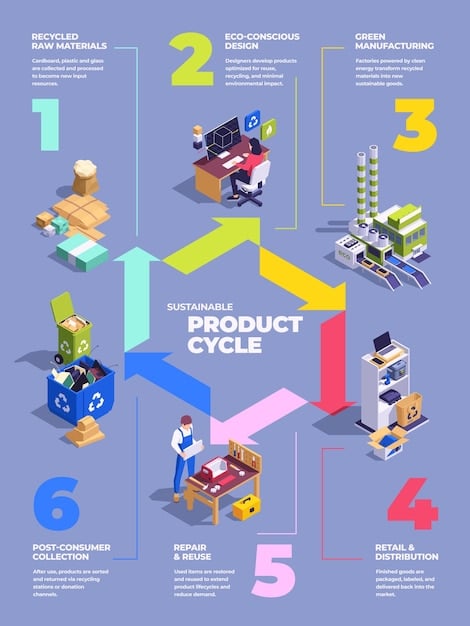
Policy, Regulation, and Industry Collaboration in the US
The pace and direction of sustainable packaging innovation in the US are heavily influenced by policy, regulation, and the increasing trend of industry collaboration. While technological breakthroughs are essential, a supportive legislative environment and collective action across the value chain are equally crucial for widespread adoption and systemic change. Policies often provide the necessary incentives or mandates, while collaboration ensures that solutions are practical, scalable, and address shared challenges. The US landscape is seeing a dynamic interplay between these forces.
Extended Producer Responsibility (EPR) schemes are a prime example of a policy rapidly gaining traction in the US. Under EPR, producers are financially and/or operationally responsible for the end-of-life management of their products and packaging. This shifts the burden from municipalities to manufacturers, creating a strong economic incentive for companies to design packaging that is easily recyclable, reusable, or compostable. Several states have already adopted EPR laws for packaging, with more expected to follow, creating a patchwork of regulations that industry must navigate.
Key Policy and Collaborative Efforts
The framework for sustainable packaging in the US is being shaped by a combination of government initiatives and industry-led partnerships. These efforts aim to create a more harmonized and efficient system for sustainable packaging development and deployment.
* State-Level EPR Implementation: States like Maine, Oregon, and Colorado have passed EPR laws for packaging, requiring producers to fund or manage recycling programs. This trend is expected to accelerate, pushing companies towards more circular packaging designs.
* Federal Research and Development (R&D) Funding: Government agencies are investing in R&D for advanced recycling technologies, bio-based materials, and infrastructure improvements, supporting foundational innovation.
* Industry Consortia and Alliances: Organizations like the Sustainable Packaging Coalition, The Recycling Partnership, and the American Institute for Packaging and the Environment (AMERIPEN) bring together brands, retailers, and packaging manufacturers to share best practices, advocate for policy, and develop industry-wide solutions.
* Standardization and Certification Bodies: Efforts to standardize what constitutes “recyclable” or “compostable” and to develop clearer labeling guidelines are crucial. Certification programs (e.g., How2Recycle label) provide consumers with reliable information and guide industry towards better design.
* Public-Private Partnerships for Infrastructure: Collaborations between government and private entities are essential for building the modern recycling and composting infrastructure needed to process the next generation of sustainable packaging materials.
The regulatory environment is prompting industry to innovate, but also to collaborate to avoid a fragmented market. Collective action allows for the pooling of resources, knowledge sharing, and the development of common standards, which are vital for achieving scale and impact. As policy continues to evolve, its influence on the trajectory of sustainable packaging innovation will only grow.
Challenges and Opportunities for Widespread Adoption
Even with impressive innovations, the path to widespread adoption of sustainable packaging in the US is not without its hurdles. Significant challenges exist, ranging from economic viability and infrastructure limitations to consumer education and behavioral change. Understanding these obstacles is crucial for strategizing how to overcome them and capitalize on the immense opportunities that sustainable packaging presents. The transition is complex, involving the overhaul of established systems and rethinking traditional ways of doing business.
One of the foremost challenges is economic viability. While new sustainable materials and technologies show promise, their production costs can sometimes be higher than conventional alternatives, especially at early stages of development. Scaling up production to achieve economies of scale is a significant investment, and brands must balance their sustainability goals with competitive pricing pressures. The entire supply chain needs to adapt, which can incur initial costs related to new machinery, processes, and logistics.
Navigating the Road to Sustainability
Despite the challenges, the opportunities for growth and positive impact are substantial. Addressing these hurdles strategically will accelerate the adoption of sustainable packaging across various sectors.
* Cost Parity and Investment: As technologies mature and production scales, the cost of sustainable packaging materials and solutions is expected to decrease, approaching parity with conventional options. Government incentives and private investment can help bridge initial cost gaps.
* Infrastructure Development: The US needs significant investment in recycling and composting infrastructure to handle new materials and increase the capture rate of existing ones. This includes advanced sorting facilities, chemical recycling plants, and industrial composting operations.
* Consumer Education and Engagement: Clear labeling and effective communication are vital to educate consumers on how to properly dispose of new sustainable packaging types (e.g., differentiating between industrial and home compostable materials). Encouraging participation in reuse systems is also key.
* Performance and Functionality: New materials must match or exceed the performance of traditional packaging in terms of protection, shelf-life, and consumer convenience. Ongoing R&D is critical to improve material properties.
* Standardization and Policy Harmony: Developing consistent standards for recyclable and compostable packaging, along with harmonized policies across states, would reduce complexity for businesses and streamline efforts.
The opportunities are vast. Brands that embrace sustainable packaging can enhance their reputation, attract environmentally conscious consumers, and potentially open new markets. Furthermore, transitioning to circular models can create new jobs in recycling, composting, and material innovation. Overcoming these challenges requires a collaborative, long-term vision and sustained commitment from all stakeholders to build a truly sustainable packaging ecosystem in the US.
The Future Landscape of Sustainable Packaging in the US
Looking ahead, the trajectory for sustainable packaging in the US is one of dynamic growth and continuous transformation. The innovations we see today are just the beginning of a profound shift towards packaging that not only protects products but also cherishes the planet. The future landscape will likely be characterized by an even greater diversification of materials, highly integrated digital solutions, and a truly circular approach embedded in every stage of the packaging lifecycle. It’s not just about one silver bullet but a comprehensive ecosystem of solutions.
The emphasis will increasingly move beyond simply reducing waste to actively regenerating resources and ecosystems. This means more widespread adoption of materials that are not just “less bad” but “actively good”—materials that can restore soil health, clean water, or sequester carbon. The concept of “packaging as a service” rather than a disposable item will also gain prominence, with refill and reuse models becoming commonplace across various consumer goods categories. The industry is poised for an era of radical redesign.
Envisioning Tomorrow’s Sustainable Packaging
The next decade in US sustainable packaging will likely bring forth several transformative trends, driven by ongoing innovation, evolving consumer demands, and a reinforcing policy environment.
* Ubiquitous Biopolymers and Alternative Fibers: Expect to see a significant increase in the use of advanced bioplastics, seaweed-based films, and highly functional molded fiber solutions across diverse product categories, moving beyond niche applications.
* Scaled-Up Chemical Recycling and Reuse: Chemical recycling will become a more mature and widespread technology, enabling a greater volume of plastic waste to be returned to high-quality new packaging. Reuse and refill systems will become a standard offering from more brands.
* AI and IoT Driven Optimization: Smart packaging will evolve beyond basic QR codes to sophisticated systems that provide real-time data on product freshness, supply chain integrity, and seamless integration with smart home and recycling systems, heavily reducing food and product waste.
* Harmonized Policy and Global Synergies: A more aligned policy landscape at the federal and state levels will provide greater clarity and impetus for innovation. US innovations will also increasingly influence, and be influenced by, global developments in sustainable packaging.
* Consumer-Led Circularity: Educated and empowered consumers will play an even more active role in the circular economy, demanding sustainable options and participating enthusiastically in proper disposal and reuse programs.
Ultimately, the future of sustainable packaging in the US is about creating a system that is not only environmentally responsible but also economically resilient and socially equitable. It’s a continuous journey of innovation, collaboration, and adapting to the evolving needs of both the planet and its inhabitants. The challenges are real, but the commitment to finding sustainable packaging solutions is unwavering.
| Key Innovation | Brief Description |
|---|---|
| 🌱 Biopolymers | Plant-based plastics (e.g., PLA, PHA) offering biodegradable or compostable alternatives to traditional plastics. |
| 🔄 Advanced Recycling | Chemical processes breaking down plastics to molecular level for high-quality new materials. |
| ♻️ Refill & Reuse | Systems designed for multiple uses of packaging, reducing single-use waste. |
| 💡 Smart Packaging | Integration of digital tech (QR, IoT) for traceability, waste reduction, and consumer info. |
Frequently Asked Questions About Sustainable Packaging
Sustainable packaging minimizes environmental impact throughout its lifecycle, from resource extraction and manufacturing to disposal. Key characteristics include being made from renewable or recycled materials, being recyclable, compostable, or reusable, and reducing unnecessary weight or volume. It also considers social and economic impacts.
Not always. While bioplastics are often made from renewable resources, their environmental benefit depends on factors like their source, manufacturing process, and end-of-life options. Some bioplastics require industrial composting facilities, which are not widely available, and some are not biodegradable at all, despite being bio-based.
EPR policies push packaging innovation by making producers financially responsible for collecting and recycling their packaging after use. This incentivizes companies to design packaging that is easier and more cost-effective to recycle, compost, or reuse, driving a shift towards more sustainable materials and systems.
Consumers play a crucial role by choosing products with sustainable packaging, properly disposing of packaging according to local guidelines, and participating in reuse/refill programs. Their purchasing power and demand for eco-friendly options drive brands to innovate and invest in greener packaging solutions.
Key challenges include developing widespread, accessible recycling and composting infrastructure, achieving cost competitiveness with conventional packaging, ensuring new materials meet functional requirements (e.g., shelf-life), and educating consumers on proper disposal and reuse practices. Policy harmonization across states is also a factor.
Conclusion
The advancements in sustainable packaging across the US signal a profound transformation within the industry, driven by material science breakthroughs, circular economy principles, and synergistic policy initiatives. From novel biopolymers and advanced recycling technologies to intelligent, digitally integrated solutions, the innovation landscape is vibrant and dynamic. While significant challenges remain—particularly in infrastructure and economic scalability—the collective commitment from industry, government, and consumers is propelling packaging towards a more environmentally responsible and regenerative future. The journey is ongoing, but the trajectory is clear: sustainable packaging is not just a trend but an imperative that is reshaping how products are delivered to market and how we interact with our waste streams.
